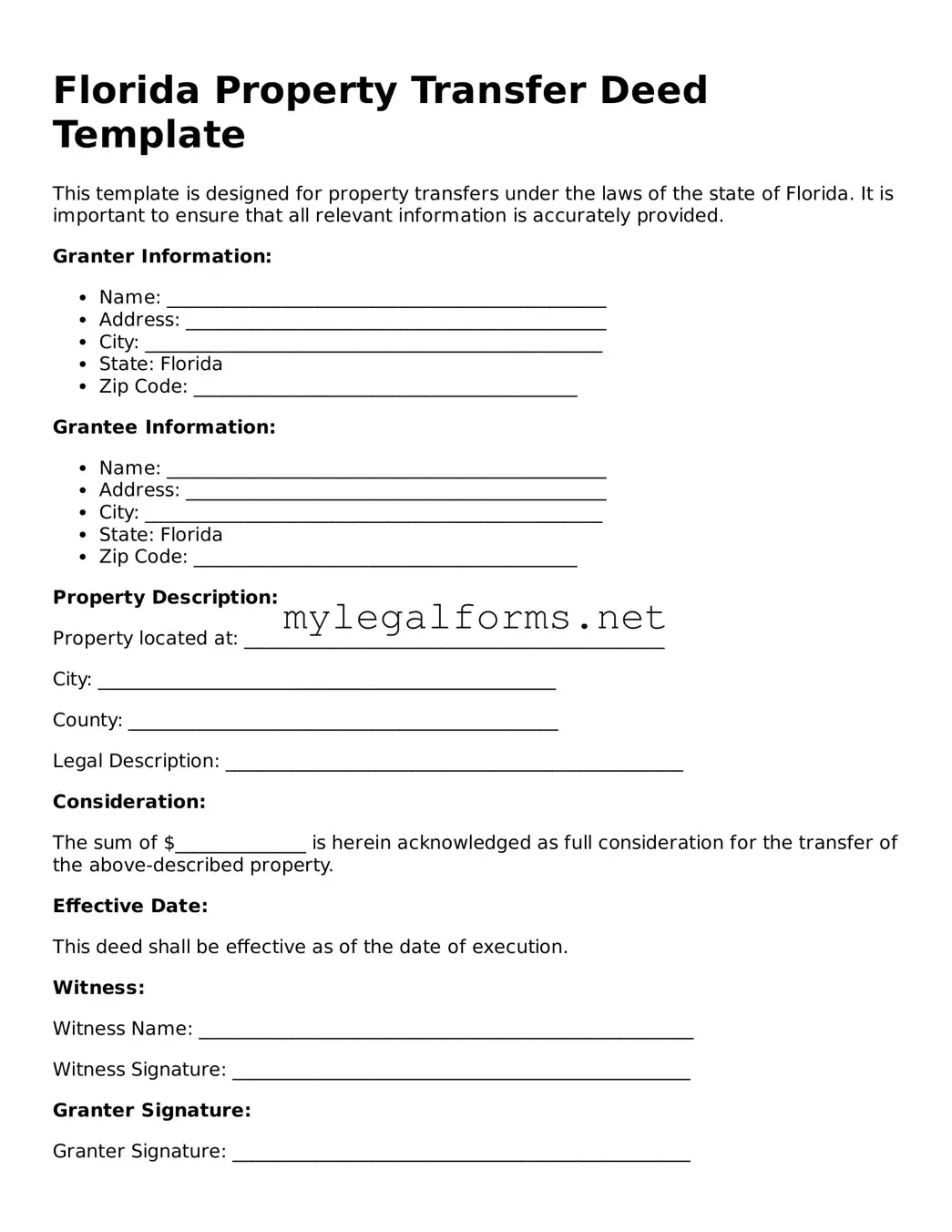Florida Property Transfer Deed Template
This template is designed for property transfers under the laws of the state of Florida. It is important to ensure that all relevant information is accurately provided.
Granter Information:
- Name: _______________________________________________
- Address: _____________________________________________
- City: _________________________________________________
- State: Florida
- Zip Code: _________________________________________
Grantee Information:
- Name: _______________________________________________
- Address: _____________________________________________
- City: _________________________________________________
- State: Florida
- Zip Code: _________________________________________
Property Description:
Property located at: _____________________________________________
City: _________________________________________________
County: ______________________________________________
Legal Description: _________________________________________________
Consideration:
The sum of $______________ is herein acknowledged as full consideration for the transfer of the above-described property.
Effective Date:
This deed shall be effective as of the date of execution.
Witness:
Witness Name: _____________________________________________________
Witness Signature: _________________________________________________
Granter Signature:
Granter Signature: _________________________________________________
Date: _____________________________________________________________
Notary Acknowledgment:
State of Florida
County of _________________________________
On this ____ day of ____________, 20___, before me, _____________, a Notary Public in and for said county and state, personally appeared _____________________________ (Granter Name), who is known to me or who has produced _____________________________ as identification, and who executed the foregoing instrument for the purposes therein contained.
Notary Signature: ________________________________________________
My commission expires: ___________________________________________
